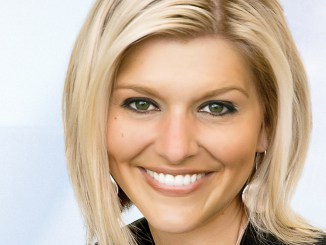
"When I told my dad I was interested in the field of dietetics, he was very supportive. His career had been in medical maintenance of hospital equipment and had come to know some of the registered dietitians," says Major Christine L. Edwards, MS, RD, CSP, FADA. "Dietetics seemed to be a good fit for my personality: I liked working with people, I loved to plan and cook meals and I was crazy about science and health."
Edwards joined the Army in 1990, and 12 years later, after teaching clinical dietetics at the Brooke Army Medical Center, she was assigned to run the Nutrition Care Division for Blanchfield Army Community Hospital at Fort Campbell, Ky. When preparation for Operation Iraqi Freedom began, Edwards was reassigned to the 86th Combat Support Hospital and soon on her way to Kuwait. It was her first deployment.
"After flying into Kuwait we were transported to a camp out in the desert," says Edwards. Comprised of approximately 17,000 people, Camp Udairi was constructed where weeks before nothing had existed. "At best it was primitive camping and daily sand storms made it a challenge to keep the kitchen tent clean. To make matters worse the dining hall—and a great deal of food—burned down the day before we arrived," she says. Edwards spent most of her time working the supply system to get the food they needed to survive and to pack for the war. Not knowing how much time she had or how many people she would have to feed made stretching the food to cover the team a challenge. Less than three weeks later, part of her hospital moved into Iraq with the initial ground invasion.
They set up in Tallil at an old Iraqi military base that had been abandoned since Desert Storm. The kitchen tent was set up on a concrete pad and one building was converted into a hospital with 44 beds, two operating rooms, a pharmacy, lab, X-ray facility and nutrition care. "Within the first few days we weathered a dust storm, a rainstorm and a flood, followed by temperatures up to 100 degrees Fahrenheit. Keeping food hot was certainly not a problem, but the extreme conditions made refrigeration a challenge," says Edwards. "Loss of food or, worse yet, foodborne illness were constant concerns. Re-hydration and sanitation were also challenges, and before long we had cases of dysentery and Norwalk virus."
On March 25, 2002, the hospital received 130 American and Iraqi patients in a matter of hours. "The dining tent was turned into the overflow ward and I remember one Iraqi man who'd lost his five children and wife fleeing the war zone that night," says Edwards. "After he was treated for shrapnel wounds, he helped us feed and care for orphans. I was surprised that someone who had lost so much was glad to see us, but he said that he now had hope for Iraq’s future."
Edwards’ first deployment into Iraq lasted six months. She called again in late 2004 for 10 months, serving with the 86th Combat Support Hospital in Baghdad.
Today, Edwards is the Chief of Force Health Protection Branch in the Directorate of Combat and Doctrine Development—part of the Army Medical Department Center & School—and is the working group leader for Performance Nutrition, which belongs to the Department of Defense under the Food and Nutrition Subcommittee. "I am very proud to be a part of the Army making a difference in the world," she says. “To work together, to save lives and to offer hope and a chance for liberty are all things worth living and fighting for."



